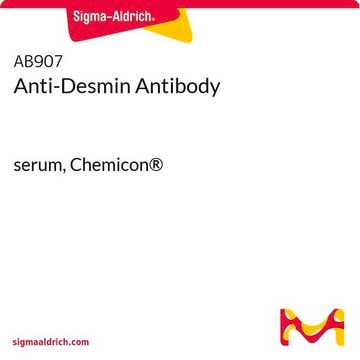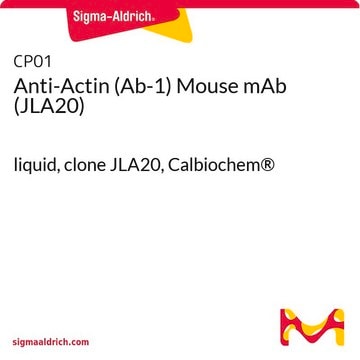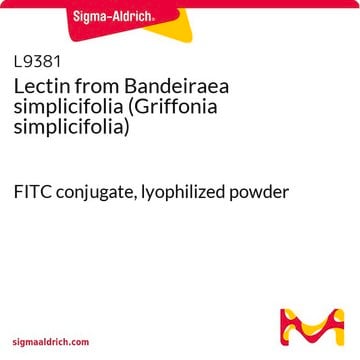113200
Anti-α-Aktin-Maus-mAb (1A4)
liquid, clone 1A4, Calbiochem®
About This Item
Empfohlene Produkte
Biologische Quelle
mouse
Qualitätsniveau
Antikörper-Produkttyp
primary antibodies
Klon
1A4, monoclonal
Form
liquid
Enthält
≤0.1% sodium azide as preservative
Speziesreaktivität
baboon, rabbit, human
Hersteller/Markenname
Calbiochem®
Lagerbedingungen
do not freeze
Isotyp
IgG2a
Versandbedingung
wet ice
Lagertemp.
2-8°C
Posttranslationale Modifikation Target
unmodified
Angaben zum Gen
human ... ACTA1(58)
Allgemeine Beschreibung
Immunogen
Anwendung
Immunblot (siehe Kommentare)
Paraffinschnitte (1:50–1:75)
Verpackung
Warnhinweis
Physikalische Form
Hinweis zur Analyse
Fibroblasten, quergestreifte Muskulatur oder Myokard
Glatte Muskelzellen von Blutgefäßen und Parenchymgewebe aus Darm, Hoden oder Eierstöcken
Sonstige Hinweise
Skalli, O., et al. 1989. J. Histochem. Cytochem37, 315.
Skalli, O., et al. 1986. J. Cell. Biol. 103, 2787.
Rechtliche Hinweise
Not finding the right product?
Try our Produkt-Auswahlhilfe.
Lagerklassenschlüssel
12 - Non Combustible Liquids
WGK
WGK 2
Flammpunkt (°F)
Not applicable
Flammpunkt (°C)
Not applicable
Analysenzertifikate (COA)
Suchen Sie nach Analysenzertifikate (COA), indem Sie die Lot-/Chargennummer des Produkts eingeben. Lot- und Chargennummern sind auf dem Produktetikett hinter den Wörtern ‘Lot’ oder ‘Batch’ (Lot oder Charge) zu finden.
Besitzen Sie dieses Produkt bereits?
In der Dokumentenbibliothek finden Sie die Dokumentation zu den Produkten, die Sie kürzlich erworben haben.
Unser Team von Wissenschaftlern verfügt über Erfahrung in allen Forschungsbereichen einschließlich Life Science, Materialwissenschaften, chemischer Synthese, Chromatographie, Analytik und vielen mehr..
Setzen Sie sich mit dem technischen Dienst in Verbindung.








